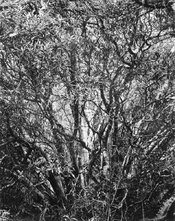Sirius Glass
Subscriber
I do not often choose the contrast of a film for situations. I choose a film that I like or that I want know better. But I do watch the contrast in situations to adapt my development time if necessary. Multigrade paper however is quite forgiving and scanning with digital pp even more. If you use 35mm film with 36 exposures in very different contrast situations XP2 can be usefull indeed. Main criterium however is whether I like the film.
I choose the film and the exposure, then after developing I adjust the contrast on the print using multigrade paper. I do not miss the single grade paper much now.







